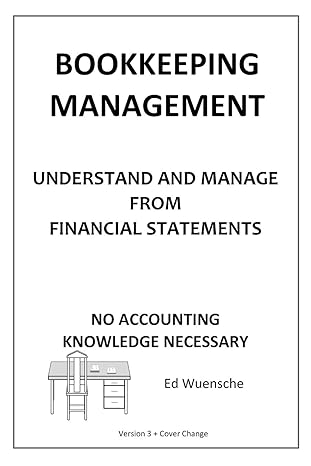Question
**PLEASE SHOW STEP BY STEP CALCULATIONS; IF USING EXCEL PLEASE SHOW A SCREENSHOT OF FORMULAS** **PLEASE ANSWER QUESTION IF YOU ARE STRONG IN FINANCE/ACCOUNTING** Please
**PLEASE SHOW STEP BY STEP CALCULATIONS; IF USING EXCEL PLEASE SHOW A SCREENSHOT OF FORMULAS**
**PLEASE ANSWER QUESTION IF YOU ARE STRONG IN FINANCE/ACCOUNTING**
Please review by categorizing data to make an informed recommendation or statement that responds to the question at hand. It also involves using critical thinking to analyze the organized data in order to make an informed, recommendation and fact-supported justification
INSTRUCTIONS: An analytical description of the market competitive environment can be done and the following information can be searched for using dataumbers from screenshot:
1) Geographic market and segment size (unit and $),
2) structure and growth,
3) and industry production capacity
Over the years, Greywell had established a solid reputation for the Coral Divers Resort as a safe and knowledgeable scuba diving resort that offered not only diving but also a beachfront location. Because Coral Divers Resort was a small but well-regarded, all-around dive resort in the Bahamas, many divers had come to prefer Greywells resort to the other crowded tourist resorts in the Caribbean.
However, over the last three years, revenues had declined; for 2008, bookings were flat for the first half of the year. Greywell felt he needed to do something to increase business before the situation worsened. He wondered whether he should add some specialized features to the resort to help distinguish it from the competition. One approach would be to focus on family outings.
Rascals in Paradise (Rascals), a travel company that specialized in family diving vacations, had offered to help him convert his resort to specialize in family diving vacations. Rascals had shown him the industry demographics indicating that families were a growing market segment (see Exhibit 1) and suggested the changes that would need to be made at the resort. Rascals had even offered to create childrens menus and to show the cook how to prepare the meals.
Industry Demographics
Scuba diving had grown steadily in popularity over the last 20 years. From 1989 until 2001, certifications had increased an average of 10 per cent each year; and increases had continued to be steady, despite more difficulties surrounding air travel because of the events of September 11, 2001, and the bleaching impact of climate change on coral reefs. In 2007, the total number of certified divers worldwide was estimated to be more than 22 million. The National Sporting Goods Association, which conducted an annual sports participation survey, projected the number of active divers in the United States at 2.1 million, and market share data from resort destinations showed 1.5 million active traveling U.S.-based scuba divers, not including resort divers.
Approximately 65 per cent of the certified scuba divers were male, 35 per cent were female and about half of all scuba divers were married. Approximately 70 per cent of scuba divers were between the ages of 18 and 34, and approximately 25 per cent were between the ages of 35 and 49 (see Exhibit 2). Scuba divers were generally well educated: 80 per cent had a college education. Overwhelmingly, scuba divers were employed in professional, managerial and technical occupations and earned an average annual household income of $75,000, well above the national average. Forty-five per cent of divers traveled most often with their families, and 40 per cent traveled most often with friends or informal groups.
People were attracted to scuba diving for various reasons; seeking adventure and being with nature were the two most often cited reasons (identified by more than 75 per cent of divers). Socializing, stress relief and travel also were common motivations. Two-thirds of all divers traveled overseas on diving trips once every three years, whereas 60 per cent traveled domestically on dive trips each year. On average, divers spent $2,816 on dive trips annually, with an average equipment investment of $2,300. Aside from upgrades and replacements, the equipment purchase could be considered a one-time cost.
CORAL DIVERS RESORT
Coral Divers Resort (Coral Divers) had been in operation for 10 years. Annual revenues had reached as high as $554,000. Profits generally had been in the two per cent range, but for the past two years, the business had experienced losses. The expected turnaround in profits in 2007 had never materialized (see Exhibit 6). Revenues had continued to decline. From talking with other operators, Greywell understood that resorts with strong identities and reputations for quality service were doing well. Greywell thought that the Coral Divers Resort had not distinguished itself in any particular aspect of diving or as a resort.
If enough paying divers were signed up, Greywell was happy to let resort guests ride and dive free of charge. If there were not enough paying divers, no afternoon dive trips were scheduled, and the guests were on their own to swim at the beach, sightsee or just relax.
When space was available, non-divers (either snorkelers or bubble-watchers) could join the boat trip for a fee of $15 to $25.
Rascals in Paradise
One travel company, Rascals in Paradise (Rascals), specialized in family travel packages. Rascals also organized family weeks at popular dive destinations in Belize, Mexico and the Cayman Islands. Family week packages accounted for more than 50 per cent of Rascals bookings each year. On these scheduled trips, groups of three to six families shared a teacher/escort, who tailored a fun program for children and served as an activities director for the group. Rascals special family week packages were priced based on a family of four (two adults and two children, aged two to 11) and included a teacher/escort, one babysitter for each family, childrens activities, meals, airport transfers, taxes, services and cancellation insurance (see Exhibit 4) but not airfare. For example, in 2007, a seven-night family vacation at Hotel Club Akumal, on the Yucatan coast, cost US$2,080 to US$3,100 per family. Rascals also packaged independent family trips to 57 different condos, villas, resorts and hotels, which offered scuba diving. An independent family trip would not include a teacher/escort and babysitter (see Exhibit 5) and a 7-night family trip to Hotel Club Akumal would cost between US$624 and US$1,779, depending on the season and the type of room. Here also, the airfare was not included.
Greywells bookings ran 90 per cent of capacity during the high season (December through May) and 50 per cent of capacity during the low season (June through November). Ideally, he wanted to increase the number of bookings for the resort and dive businesses during both seasons. Adding additional diving attractions could increase both resort and dive revenues.
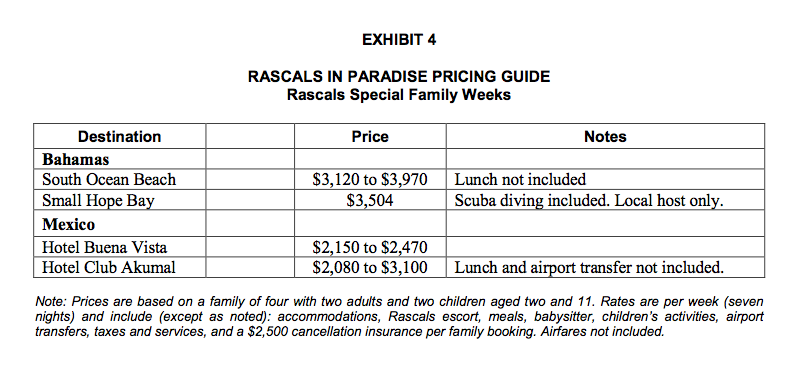
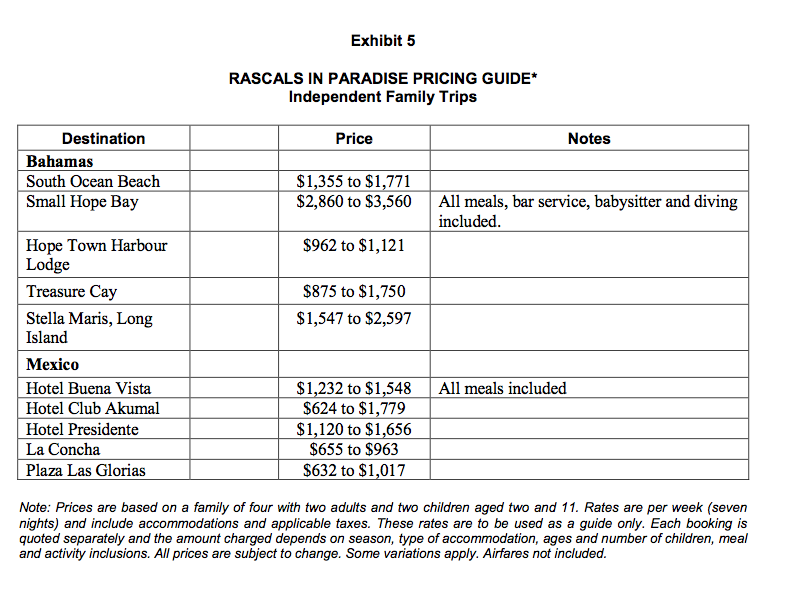

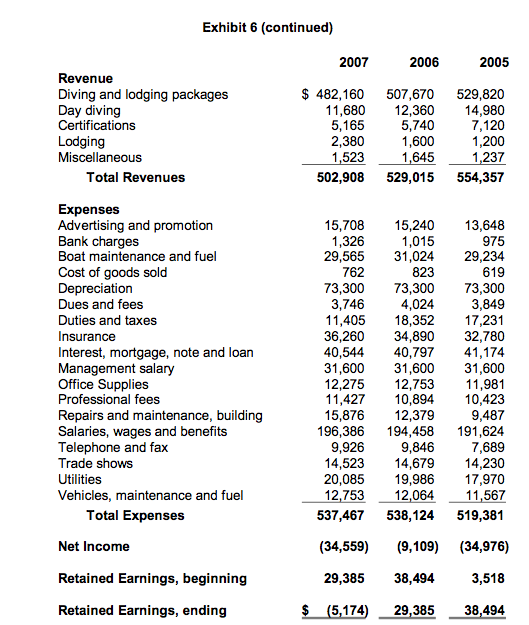
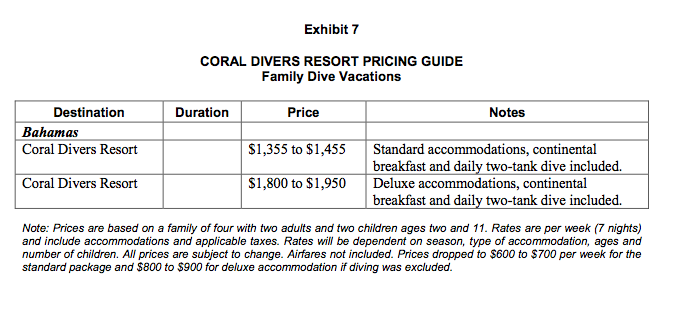
Step by Step Solution
There are 3 Steps involved in it
Step: 1

Get Instant Access to Expert-Tailored Solutions
See step-by-step solutions with expert insights and AI powered tools for academic success
Step: 2

Step: 3

Ace Your Homework with AI
Get the answers you need in no time with our AI-driven, step-by-step assistance
Get Started


